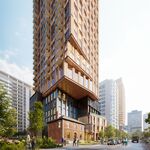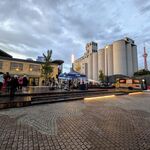Ah, but are these "most people" neighbourhood residents?
NIMBYism is the curse of this city, stem to stern. And I mean CITY. Not just the stuff south of Steeles. We have umpteen dozen pointless municipalities that aren't responsible to one another, poaching businesses, undercutting taxes, barely co-operating on transit. The people you're talking about aren't trees, rooted in the soil. They're living there now, at the moment. Tomorrow they might be elsewhere; I might be there tomorrow. Their neighbourhood IS my neighbourhood; my neighbourhood IS their neighbourhood. It's all one thing. We need to figure out what's in the best interests of the six million living in the GTA today, and the millions in the future, not just the few thousands proximate to whatever it is we're talking about at the moment. I don't think that's going to come about, but it's sure something I would wish for this city. ALL of it.
Face it: as trafficked and critical as they are in their way, Lansdowne and Jameson are still not officially "major arterials" in the same way that Dufferin is
I can't agree with this. Jameson is a tie to the Gardiner in a way Dufferin simply isn't. And if it can fairly be said that Lansdowne ends at St. Clair, then it should be pointed out that Dufferin itself doesn't go much further in a practical sense: it essentially ends at Wilson. North of Wilson, it's disconnected, and the same street in name only. It is effectively the feeder lanes of the Allen and the 401 in lieu of the extension of the expressway.
And methinks it's the *motorists* that are being pressed into adjusting to the change rather than hurling themselves on the rocks of despair.
That's at odds with the fact that smog alerts in this city started in the 1990s and have been growing more frequent. Obviously people have not been adjusting to things like pointless doglegs and a lack of high speed expressways by abandoning their cars, in spite of all the Jacobian 'logic' in the world. Darn that old human nature; they still prefer the utility and liberty of being able to go where they want, when they want that the automobile provides, and so they're jamming the few highways we do have and clogging the surface roads when space on them overflows. And yet, a hundred thousand people move to the GTA every year, buy a couple of cars, and set out making a living and going places to buy the things that keep the economy going. What's our response? Deal with the obvious and facilitate it? No, get philosophical and tell them they're "wrong" and there,
that'll fix it.
You know what will end the smog alerts? It's not going to be people abandoning the personal automobile. It's going to be when automobiles are eventually emissions-free. That's it. Barring a nuclear war, I'm willing to forecast that if you come back in 2057, you're still going to see people on the roads, in their cars, going where they want or need to be. Millions of them more than now. Just they probably won't be burning gasoline anymore.
As for the locals; well, they can live with the congestion.
Well, unfortunately, that's the upshot of it. A case in point: if the Spadina had been built in 1970, the folks in Eglinton West Village wouldn't have all those cars poured onto their residential streets, and they wouldn't 'need' the speed bumps, or the stop signs every thirty yards. But it wasn't, so they do, and the problem only gets worse. NIMBYism in action.




